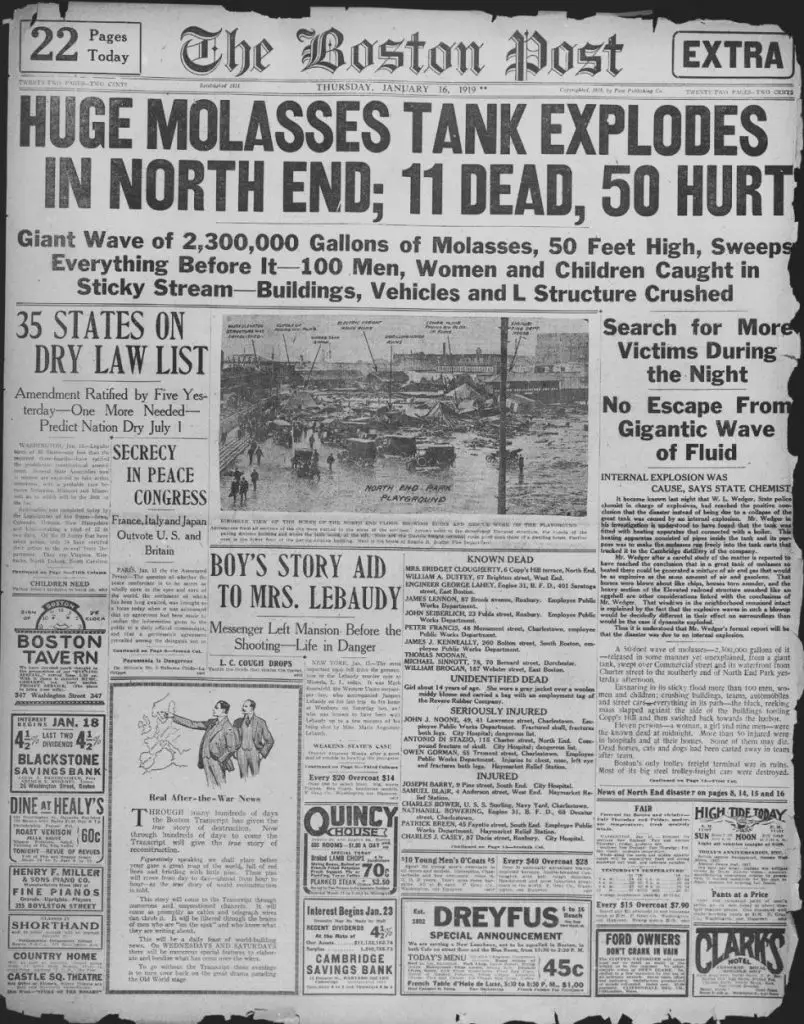The North End of Boston, Massachusetts was the sight of one of the strangest and most unbelievable tragedies in modern history.
In the early afternoon of January 15th, 1919, a large storage tank filled with 2.3 million (US) gallons of molasses, burst, sending a two-story flood into the streets of Boston. The rushing molasses is estimated to have been traveling around 35 mph (56km/h).
Ethanol, the active ingredient in alcohol, is made by fermenting molasses. The Purity Distilling Company near Keany Square, would store huge amounts of molasses at their site. While offloading cargo ships, the molasses was loaded into tanks while waiting to be transferred by pipeline to the ethanol plant in Cambridge.
The day of the explosion, the temperature had risen to a comfortable 40* F (4*C), significantly higher than the previous night’s below freezing temperatures.
That previous day, a new shipment of molasses arrived warmed to allow for easier flow into the tanks. It is believed that the thermal reaction of the cold molasses with the sudden addition of hot, created expansion and pressure in the tank which caused it to explode.

The Boston Globe reported;
Molasses, waist deep, covered the street and swirled and bubbled about the wreckage …. Here and there struggled a form—whether it was animal or human being was impossible to tell.
Only an upheaval, a thrashing about in the sticky mass, showed where any life was …. Horses died like so many flies on sticky fly-paper. The more they struggled, the deeper in the mess they were ensnared. Human beings—men and women—suffered likewise.
Several city blocks were under 2-3 feet of molasses. Twenty-one people were killed in the flood, while another 150 were injured. Many horses were also killed that day and numerous others were injured.
Four days after the accident, the search for victims was called off. Several people were swept into Boston Harbour and many were found 3-4 months later.
The clean-up took weeks and many residents claimed for decades that they could still smell the sweet molasses on hot summer days.
Written by Julie St Jean
Header Image – Panorama of the Molasses Disaster – Public Domain







